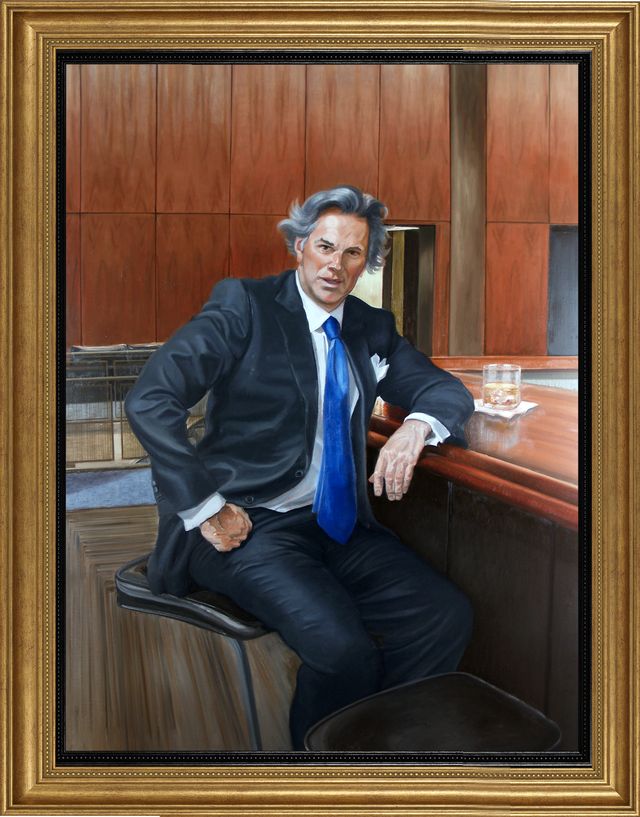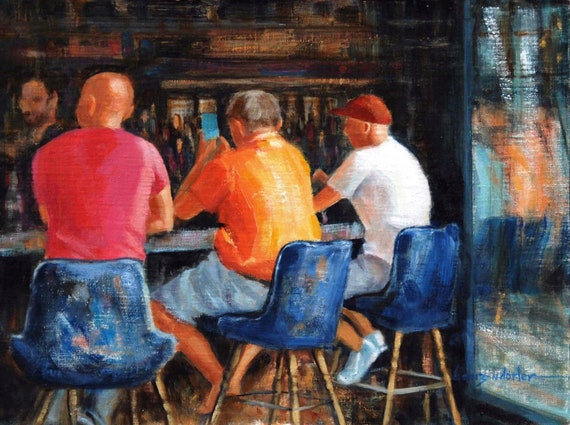The Evolution of Art: A Comprehensive Overview to Figurative Oil Painting
The Evolution of Metaphorical Oil Paint: Comprehending Its Historical Significance and Modern Interpretations
The advancement of figurative oil paint offers as a compelling lens via which to take a look at the interaction in between artistic expression and historical context. Contemporary musicians, attracting from this rich heritage, are currently reinterpreting the human figure in methods that test conventional stories.
Beginnings of Figurative Oil Painting
The beginnings of figurative oil painting can be mapped back to the early Renaissance in Europe, especially in the 15th century. This duration marked a considerable separation from the level depictions and stiff kinds characteristic of middle ages art. Musicians began to check out naturalism, stressing the human figure and its emotional expression. The growth of oil paint enabled higher deepness of shade and detail, improving the realistic look and vibrancy of their job.

In this transformative period, numbers were commonly illustrated within contextually rich environments, showcasing not only their physical features yet additionally their mental states. Pioneers such as Jan van Eyck and Titian utilized the medium's versatility, utilizing layering methods to accomplish luminosity and appearance. This technology assisted in the portrayal of elaborate textiles and the nuances of skin tones, adding to the growth of portrait and narrative scenes.
In Addition, the Renaissance emphasis on humanism fostered an admiration for distinctiveness, which in turn affected artists to create even more relatable and vibrant numbers - figurative oil painting. As a result, metaphorical oil paint became a powerful vehicle for narration and psychological interaction, preparing for future artistic activities and designs
Key Historic Movements
Considerable historical motions have shaped the development of figurative oil painting, each adding distinct ideologies and methods that increased the medium's opportunities. The Renaissance noted a pivotal moment, stressing realism and the human kind, with artists like Leonardo da Vinci and Michelangelo pushing the borders of anatomical accuracy and viewpoint. Following this, the Baroque era brought significant contrasts of light and shadow, exhibited by Caravaggio, that instilled religious motifs with intense emotionality.
The 19th century introduced Romanticism and Realistic look, where musicians such as Delacroix and Courbet challenged classical suitables, concentrating on individual expression and daily life. The advent of Impressionism even more reinvented the tool by emphasizing the impacts of light and shade, bring about a separation from typical representation.
In the early 20th century, activities like Expressionism and Cubism redefined figurative painting with abstraction and the exploration of psychological deepness. Each of these activities not just showed the societal modifications of their times yet also prepared for modern analyses. The interaction in between these historic movements has produced a rich tapestry of ideologies and designs, affecting modern-day musicians in their search of recording the human experience on canvas.
Techniques and Materials Evolution

Throughout the Baroque duration, techniques such as chiaroscuro and sfumato arised, enhancing the emotional resonance of figurative structures. Musicians started to explore glazes and impasto, controling texture and luminance. By the 19th century, developments like using pre-mixed paints in tubes transformed ease of access, permitting artists to repaint en plein click for more air and capture the short lived results of light.
The 20th century saw the intro of synthetic pigments and tools, which expanded the combination and altered the consistency of oil paints. The expedition of brand-new application methods, such as scheme knives and brushes of varying rigidity, further diversified creative expression. Jointly, these developments mirror the evolving connection in between materials, strategies, and the creative vision inherent in figurative oil painting.

Contemporary Interpretations
Contemporary interpretations of figurative oil paint show a vibrant dialogue between tradition and innovation, where informative post artists challenge established standards and discover varied motifs. This advancement shows up in numerous means, as modern musicians mix classic methods with contemporary ideas, typically attending to social, political, and personal narratives.
Many practitioners attract ideas from historic jobs, yet they infuse their items with modern point of views, using the human form as a vehicle for discourse on society, gender, and identity. Artists significantly explore abstraction, distortion, and blended media, which enables a more comprehensive analysis of the figure and its context.
Moreover, using brilliant color schemes and unique compositions often offers to disrupt traditional checking out experiences, provoking essential interaction from audiences. This change in focus extends past visual appeals; it mirrors a growing awareness of the intricacies of human experience in an interconnected globe.
As figurative oil paint remains to evolve, it stays a vital tool for exploring the subtleties of contemporary life, symbolizing both a respect for heritage and a commitment to see it here dynamic thought. The outcome is a rich tapestry of expression that resonates with the intricacies of the modern human problem.
Influence On Modern Art
The influence of figurative oil painting on modern art is profound, as it has continuously inspired a myriad of creative motions and techniques throughout the 21st and 20th centuries. From Expressionism to Surrealism and beyond, the exploration of the human figure has continued to be a main theme, allowing artists to communicate complicated feelings and stories. This focus on metaphorical depiction has actually led to a re-examination of conventional methods, leading to ingenious strategies that mix realistic look with abstraction.
Moreover, contemporary artists have embraced metaphorical oil paint as a way to address social and political concerns, making use of the tool to test assumptions of sex, society, and identity. The rebirth of passion in metaphorical operate in recent years reflects a longing for link in a significantly electronic globe, where human experience and emotion are critical.
Additionally, the dialogue in between figurative oil paint and contemporary art appears in the works of artists such as Kehinde Wiley and Jenny Saville, that make use of historical references while instilling their pieces with contemporary importance. Inevitably, figurative oil painting proceeds to form and redefine modern-day creative expression, underscoring its long-lasting relevance in the art world.
Conclusion
The development of metaphorical oil painting emphasizes its historical value and versatility across different imaginative activities. Eventually, metaphorical oil painting stays a crucial medium for exploring the human experience, reverberating greatly in today's electronic landscape.
The evolution of metaphorical oil paint serves as a compelling lens via which to take a look at the interaction in between imaginative expression and historical context.Considerable historic motions have actually formed the evolution of figurative oil painting, each adding one-of-a-kind philosophies and techniques that broadened the medium's opportunities.As historic activities formed the trajectory of metaphorical oil paint, the materials and methods used by musicians have actually additionally undergone significant changes. figurative oil painting.The effect of figurative oil painting on contemporary art is profound, as it has continually inspired a myriad of artistic movements and practices throughout the 20th and 21st centuries.The development of figurative oil paint highlights its historical value and adaptability across various imaginative activities